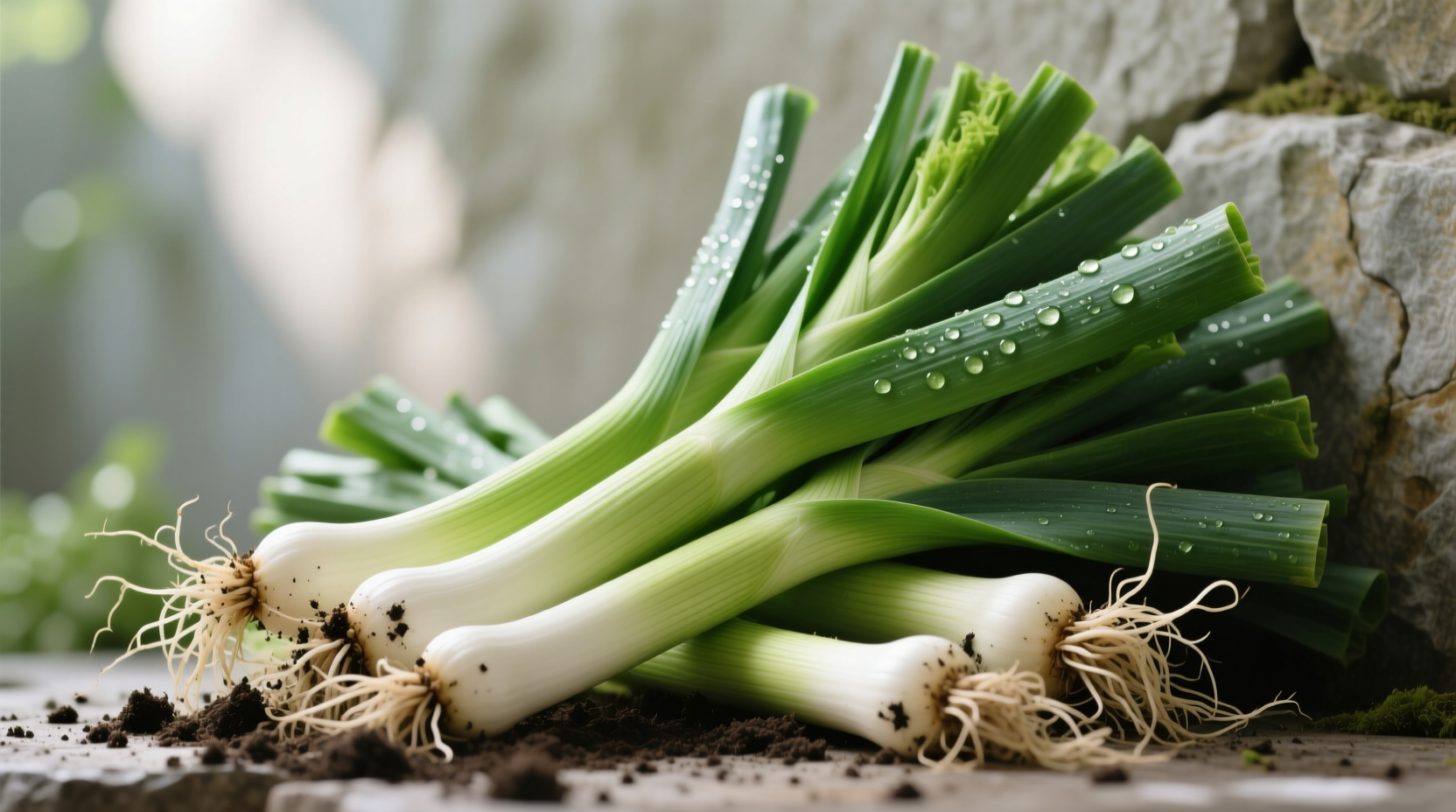If you're searching for "tom leek," you're likely looking for information about leeks—the versatile allium vegetable often confused in search terms. Leeks (Allium ampeloprasum var. porrum) are distinct from onions and garlic, featuring mild, sweet flavor and edible white and light green stalks. This guide delivers everything you need to know about selecting, storing, preparing, and cooking with leeks, including professional chef techniques and nutritional benefits backed by agricultural research.
Your Complete Journey with Leeks
Why Leeks Deserve a Spot in Your Kitchen
Leeks often get overshadowed by their onion and garlic cousins, but these elegant alliums offer a delicate flavor profile perfect for sophisticated dishes. Unlike onions that dominate with sharpness, leeks provide subtle sweetness that enhances without overwhelming. Professional chefs prize them for their ability to add depth to sauces, soups, and roasts while maintaining their structural integrity during cooking.

Selecting the Perfect Leeks: What Top Chefs Look For
When choosing leeks at your market, focus on these key indicators of freshness and quality:
- Firm, crisp stalks that stand upright without bending
- Vibrant green tops without yellowing or wilting
- White base that feels heavy for its size (indicates moisture content)
- No flowering (bulbous areas at the top signal maturity past prime)
Avoid leeks with slimy spots, dark blemishes, or excessive dirt trapped between layers—these indicate age or improper storage.
Storage Secrets: Making Leeks Last Longer
Proper storage dramatically extends leek freshness. The USDA Agricultural Research Service confirms that leeks stored correctly maintain optimal quality for 10-14 days:
| Storage Method | Duration | Quality Preservation |
|---|---|---|
| Refrigerator (unwashed, in plastic bag) | 10-14 days | Excellent crispness and flavor |
| Refrigerator (cut, in water) | 3-5 days | Good, but texture softens |
| Freezer (blanched) | 6-8 months | Suitable for cooked dishes only |
For maximum shelf life, store whole leeks unwashed in a perforated plastic bag in your refrigerator's crisper drawer. Never remove the roots until ready to use—they help maintain moisture.
Cleaning Leeks Properly: Avoiding Grit in Your Dishes
Sand trapped between leek layers ruins otherwise perfect dishes. Follow this chef-approved cleaning method:
- Trim roots and dark green tops (reserve for stock)
- Cut vertically through the center
- Submerge in cold water, separating layers
- Gently swish to release trapped dirt
- Rinse under running water, checking between layers
- Pat dry with clean kitchen towel before slicing
Professional kitchens often use a salad spinner for the final rinse—this removes excess water while keeping leeks crisp.
Mastering Leek Preparation Techniques
Different cuts serve different culinary purposes:
- Julienne (thin matchsticks): Ideal for stir-fries and garnishes
- Half-moons (sliced crosswise): Perfect for soups and sautés
- Chiffonade (thin strips of green tops): Adds color to finished dishes
- Whole stalks: Best for braising or roasting
When slicing, always cut against the grain (perpendicular to the length) for optimal texture in cooked dishes.
Cooking Methods That Highlight Leek Flavor
Leeks respond differently to various cooking techniques:
| Cooking Method | Time | Flavor Result | Best Uses |
|---|---|---|---|
| Sautéing | 8-10 minutes | Sweet, caramelized | Base for soups, sauces, quiches |
| Roasting | 20-25 minutes | Rich, nutty depth | Side dishes, vegetable medleys |
| Boiling | 12-15 minutes | Mild, delicate | Vichyssoise, purees |
| Grilling | 6-8 minutes | Smoky, complex | Salads, appetizers |
For optimal flavor development, always start cooking leeks in cold fat (butter or oil) rather than hot—this allows gradual flavor release without burning.
Nutritional Powerhouse: The Science-Backed Benefits
According to USDA FoodData Central, one cup of cooked leeks (96g) provides:
- 32% of your daily vitamin K needs
- 18% of vitamin A requirements
- 15% of manganese for bone health
- Significant prebiotic fiber for gut health
- Only 54 calories per serving
Research published in the Journal of Agricultural and Food Chemistry confirms that leeks contain kaempferol, a flavonoid with demonstrated anti-inflammatory properties. Unlike onions, leeks maintain higher nutrient levels when cooked due to their lower water content.
Historical Timeline: Leeks Through the Ages
Leeks boast one of the longest culinary histories among vegetables:
- 2000 BCE: First cultivated in Mesopotamia and Egypt
- 1st Century CE: Roman gourmand Apicius features leeks in De Re Coquinaria
- Medieval Period: Required planting in monastery gardens across Europe
- 16th Century: Introduced to North America by European settlers
- 19th Century: Becomes national symbol of Wales after battle legend
- Present Day: Featured in Michelin-starred restaurants worldwide
Classic Leek Dishes Worth Mastering
Expand your culinary repertoire with these foundational leek preparations:
- Vichyssoise: The classic French chilled soup requiring careful leek selection
- Tarte aux Poireaux: French leek tart showcasing perfect custard-to-leek ratio
- Welsh Rarebit: Traditional cheese sauce enhanced with sautéed leeks
- Leek and Potato Gratin: Layered casserole highlighting different leek cuts
For home cooks, start with simple sautéed leeks as a side dish—cook sliced leeks in butter with thyme until tender but still slightly crisp.
Common Leek Mistakes to Avoid
Even experienced cooks make these errors:
- Discarding green tops: The darker greens make excellent stock (simmer with bones and herbs)
- Overcooking: Leeks turn mushy beyond 15 minutes of boiling
- Using only white parts: The tender green sections offer nuanced flavor
- Storing near ethylene producers: Apples and bananas accelerate spoilage
Seasonal Availability and Sourcing Tips
Leeks reach peak quality during cooler months:
- Fall harvest (September-November): Largest, sweetest varieties
- Winter (December-February): Best for soups and stews
- Spring (March-May): Younger, more delicate "baby" leeks
- Summer (June-August): Generally less flavorful due to heat stress
When possible, choose locally grown leeks—they typically offer superior flavor and texture compared to imported varieties.











 浙公网安备
33010002000092号
浙公网安备
33010002000092号 浙B2-20120091-4
浙B2-20120091-4